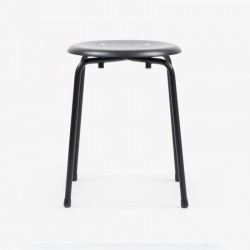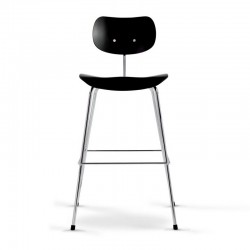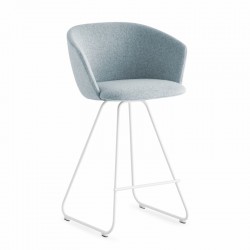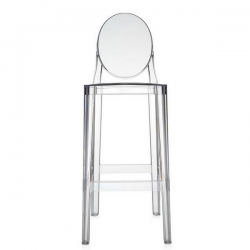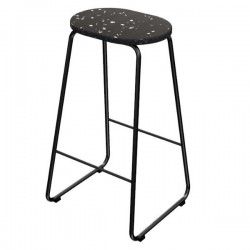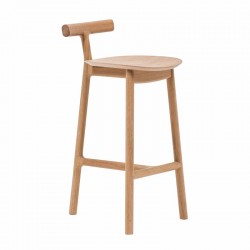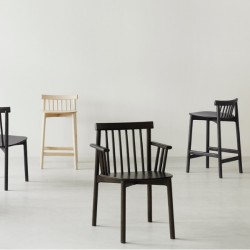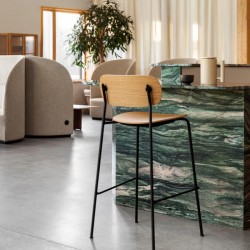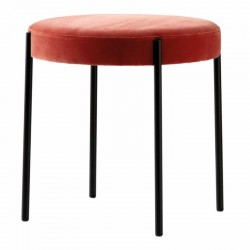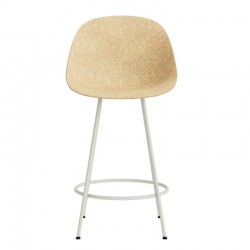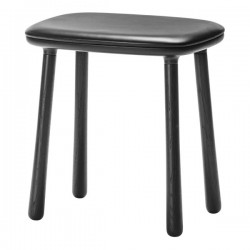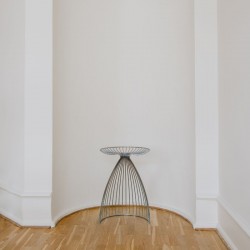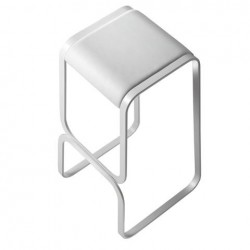ClassiCon Bar Stool No. 1, Eileen Gray 1927
Eileen Gray designed bar stools in several variations. The Bar Stool No. 1 is the simplest and most handsome of them all. It initially found itself, along with the folding mirror Castellar, in the wash corner of her bedroom in her summer home E 1027. It proves to be a versatile piece of furniture in that it is height-adjustable and thus willingly tailors itself to guests of differing sizes.
Adjustable bar stool. Frame and column of chromium-plated steel, foot in cast aluminium, lacquer finish in black or white. Upholstery: polyurethane with quilting cotton, cover in leather. Details and colours see price list.
Authorised by The World Licence Holder Aram Designs Ltd, London
Can't find it! We can supply all products from Classicon, If you know what you are looking for and it is not yet featured, please send us a request
- Specifications
Column of chromium-plated steel, base in cast aluminium, lacquer finish in black or white
Upholstery: polyurethane with polyester filling, cover in leather.- Size Description
Diameter 38cm
Height 70-85 cm- Color Description
Fabrics

-
Eilleen Gray
Eilee Gray was born in Enniscorthy, Ireland, she spent her childhood in London and was among the first women to be admitted to the Slade School of Art where she took up painting in 1898 before undergoing an apprenticeship in a lacquer workshop. She moved to Paris in 1902 where she quickly established herself as one of the leading designers of lacquered screens and decorative panels.<p>During the ‘20s and ‘30s she became one of the leading exponents of the revolutionary new theories of design and construction and worked closely with many of the outstanding figures of the modern movement, including Le Corbusier and JJP Oud. Well to the fore of this group she exhibited chrome, steel tube and glass furniture in 1925 - the same year as Mies van der Rohe and Marcel Breuer and well before Le Corbusier. Her next major contribution to design was in architecture. Encouraged by Le Corbusier and JJP Oud, she designed two houses in the Alpes Maritimes, one at Roquebrune (built 1927-29), the other at Castellar (built 1932-34).</p><p>After the war and up to her death, she continued to work as a designer, on both major projects like the cultural and social centre which occupied her from 1946-47, and on a number of smaller furniture designs. In 1972 she was appointed a Royal Designer to Industry by the Royal Society of Art, London. In 1973 Eileen Gray signed a Worldwide contract with Aram Designs, London, to bring her designs into production for the first time. The Museum of Modern Art added her legendary Adjustable Table E 1027 to its permanent design collection in 1978.</p><p>Eileen Gray Kollektion: Authorised by The World Licence Holder Aram Designs Ltd, London.</p>


 EUR
EUR






